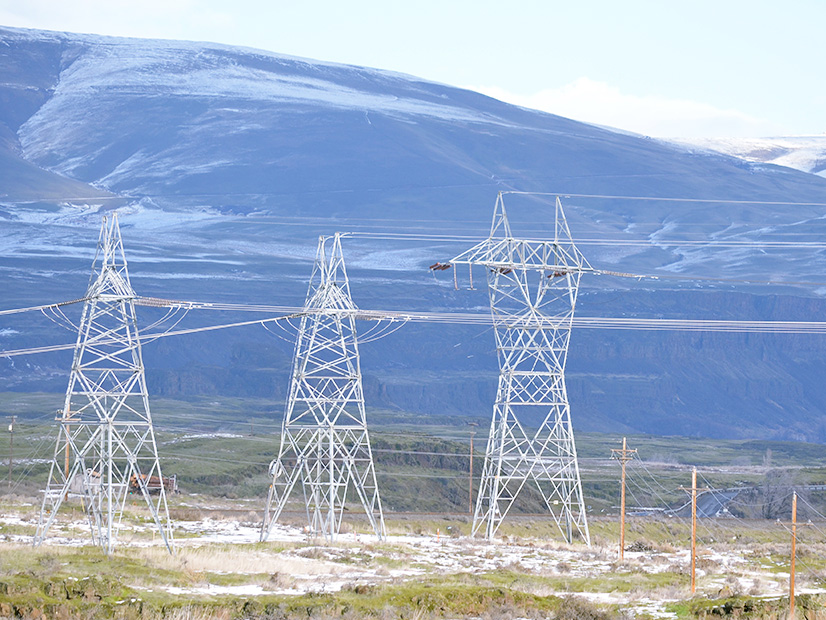
OLYMPIA, Wash. — With its abundance of hydroelectric resources, Washington has long been a key exporter of power to other parts of the West.
But the state’s Department of Commerce now says Washington is poised to become a net importer of electricity by mid-century as it moves to decarbonize its economy — a development that has alarmed lawmakers.
In 2021, Washington sent more than 18% of its generation to its neighbors in the Western Interconnection. By 2050, the state will have to reverse that pattern and import more supply to reach its goal of weaning itself from fossil fuels, the agency has found.
One reason: a mandate that all new cars sold in Washington by 2035 must be electric vehicles. A lot of additional electricity will be needed to keep those cars running.
In fact, the state’s efforts to replace carbon-emitting fossil fuels translates into increased demand for electricity as a substitute, said Glenn Blackmon, manager of the Commerce Department’s Energy Policy Office.
“It’s replacing fossil fuels in every sector of our economy,” Blackmon said in an interview.
“Are we planning for the amount of electricity needed to recharge these [electric] automobiles?” Sen. Lisa Wellman (D) asked during a Jan. 13 hearing of the Senate’s Environment, Energy and Technology Committee.
According to data from the U.S. Energy Information Administration, in 2021 Washington generated almost 111 million MWh of electricity, imported slightly more than 5 million MWh, and consumed a bit more than 88 million MWh, translating into roughly 18 million MWh of net exports.
At the Jan. 13 hearing, Blackmon told the Senate committee that the state’s power needs will increase by 97% by 2050 — to almost 230 million MWh. That means Washington will have to import a huge amount of power by 2050, he said.
“That’s a big thing to say we will begin importing power instead of exporting it,” Sen. Shelly Short (R) said.
The Commerce Department predicts that by 2050 36% of Washington’s clean energy will likely come from wind farms in Montana and Wyoming.
“We need more capacity to site and permit clean energy projects in a timely manner, and we need to bolster our transmission infrastructure to reliably deliver clean energy throughout the state,” Jaime Smith, spokesman for Gov. Jay Inslee, wrote in an email to RTO Insider.
Greater Need for Connection
For almost a decade, Inslee has pushed aggressively to curtail fossil fuel use in Washington, finally achieving major policy victories in the last two legislative sessions. Those included the nation’s second cap-and-trade law and a low-carbon fuel standard that went into effect this year. The legislature also set a soft goal of 2030 for reducing sales of gas-powered vehicles, followed by Inslee’s mandate last year that no new internal combustion engine cars be sold in the state as of 2035.
Inslee’s goals build on a 2008 state law that sets carbon-reduction targets of 45% below 1990 levels by 2030, 70% by 2040 and 95% by 2050. A 2021 Commerce Department report put the state’s CO2 emissions at 99.57 million metric tons in 2018. The report shows that from 2016 to 2018, the transportation sector was the largest contributor, at nearly 45% of Washington’s emissions.
With the state planning to shift from gas-powered cars to EVs in the 2030s, Washington’s power needs will grow, along with a need for more transmission lines, Blackmon said.
An analysis published by the Seattle-based Sightline Institute last October put that issue into sharper focus.
“Cascadia, like the United States as a whole, suffers from a woefully underbuilt and aging electric grid,” wrote Emily Moore, Sightline’s director of climate and energy. “The grid is so inadequate that hundreds of proposed wind and solar projects are ending up at the back of waitlists where they may sit for years. … New transmission lines (the high-voltage lines that often stretch over mountain ranges and along rivers on tall, scaffolded towers) take a decade or more to construct, giving the problem increasing urgency with each passing year.”
Moore continued: “Unless Northwest policymakers develop a plan for building out the grid we need, and unless they start erecting it immediately — through the Bonneville Power Administration, state action, utility investment, or some combination of these means — the region’s ambitious decarbonization commitments will amount to so much hot air.… That’s right. We may fail the climate test because we’re missing some wires.”
While hard figures are not available, Commerce has determined that massive construction of new power lines between Washington and other states such as Montana, Wyoming and Oregon is needed by 2050.
The state’s utilities are legally required to identify and plan for future transmission needs. However, Nicolas Garcia, representing the Washington Public Utility Districts Associations, last month told state senators that many utilities don’t have the expertise for transmission planning.
It takes 10 to 20 years to build a power transmission line corridor between Washington and another state, while it takes two to three years to build a solar or wind farm, Kathleen Drew, chair of state’s Energy Facility Site Evaluation Council, told the Senate energy committee at a Jan. 18 hearing on a transmission planning bill. Ten years is not long enough to tackle the studies, leasing, permitting, coordinating and construction of a transmission line corridor, she said.
Sen. Joe Nguyen (D), chair of the Environment, Energy and Technology Committee, has introduced Senate Bill 5165 to require utilities to begin using a 20-year planning horizon — instead of the current 10 years — to identify transmission needs.
State agencies, environmental groups and some utilities support the bill. But Avista Utilities and the Association of Washington Business said more details are needed on the processes and targets within the bill.
“It needs clearer standards and deadlines for agency decisions,” Avista’s John Rothlin said.

